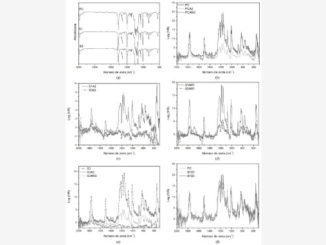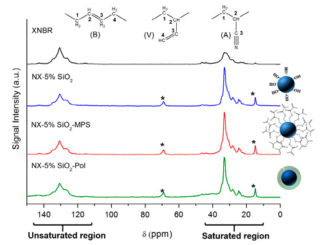
Writers: T. Badapanda; V. Senthil; S. Anwar; L.S. Cavalcante; N.C. Batista; E. Longo
Keywords: Polymer-matrix composites; Rietveld refinement; Clusters; Dielectric properties
Abstract: The polyvinyl alcohol (PVA)/barium zirconium titanate Ba[Zr0.1Ti0.9]O3 (BZT) polymer–ceramic composites with different volume percentage are obtained from solution mixing and hot-pressing method. Their structural and electrical properties are characterized by X-ray diffraction (XRD), Rietveld refinement, cluster modeling, scanning electron microscope and dielectric study. XRD patterns of PVA/BZT polymer–ceramics composite (with 50% volume fractions) indicate no obvious differences than the XRD patterns of pure BZT which shows that the crystal structure is still stable in the composite. The scanning electron micrograph indicates that the BZT ceramic is dispersed homogeneously in the polymer matrix without agglomeration. The dielectric permittivity (εr) and the dielectric loss (tan δ) of the composites increase with the increase of the volume fraction of BZT ceramic. Theoretical models are employed to rationalize the dielectric behavior of the polymer composites. The dielectric properties of the composites display good stability within a wide range of temperature and frequency. The excellent dielectric properties of these polymer–ceramic composites indicate that the BZT/PVA composites can be a candidate for embedded capacitors.
DOI: 10.1016/j.cap.2013.05.006




